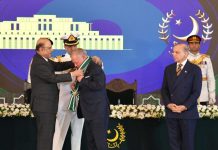By Qian Feng
Chinese State Councilor and Foreign Minister Wang Yi held full, in-depth discussions with Minister of External Affairs of India S. Jaishankar on the situation in the border areas as well as bilateral ties on the sidelines of a foreign ministers’ meeting of the Shanghai Cooperation Organization in Moscow on Thursday.
It was the first time the two officials have spoken face-to-face since the border clash broke out in June. It embodies both countries’ concerns over the escalation of the situation. Both sides hope to de-escalate the clash, stabilize bilateral ties, and prevent it from simmering into a broader conflict, or even war.
It is easier said than done. How to implement the 5-point consensus reached by two sides is crucial. Since June, several rounds of negotiations in terms of military and diplomacy between China and India have been held, in an attempt to relieve the tension. Some experts pointed out that narratives and moves from India’s Ministry of External Affairs seem to differ from the Indian Ministry of Defense, and they hold an unclear attitude on whether India will carry out the consensus.
For example, it is reported that the first batch of Rafale fighter jets were officially inducted into the Indian Air Force on Thursday, the same day that Wang and Jaishankar held talks. Indian Defense Minister Rajnath Singh said at the ceremony that “this kind of induction is very important for the kind of atmosphere that has been created on our borders in recent times.”
In general, the Ministry of External Affairs plays good cop, while the Indian Ministry of Defense is the bad cop. The two ministries coordinate with each other and apply both soft and hard tactics. From this perspective, the inconsistency between the two ministries seems to be rational. It does not mean a divergence in policy between them.
All the policies of the two ministries strictly obey the Modi government’s line. Without the approval of the Indian government, the China-India joint press statement could not be released after the meeting between foreign ministers; neither could Singh deliver the address at the ceremony of induction of Rafale fighter jets.
India’s seemingly contradictory moves by the two ministries deliver a message to China that India is ready to resolve the conflict by force, but also has the sincerity to peacefully settle the conflict. Therefore, whether India will carry out the 5-point consensus will be a big test of the Modi government’s policy toward China and of its political wisdom.
Whether India can maintain border stability is not up to the Indian military, but the Indian government. The Indian military always strictly enforces the government’s decisions.
If China and India act according to the joint press statement, or there is more engagement of higher leaders, the ongoing border clashes will be relieved to some extent and the possibility of a larger-scale armed conflict, even a war will be greatly reduced.
China, whose policy toward India has not changed, does not see India as a foe. Instead, China is willing to engage in pragmatic cooperation with India in a bid to stabilize bilateral ties. Though China has the sincerity to peacefully tackle the border conflicts with India, it will adhere to its principle to safeguard its territorial and sovereign interests.
China will not neglect the development of its defense capability, and is capable of preventing any moves that challenge China’s territorial and sovereign interests.
Apart from border conflicts, many of India’s recent moves have jeopardized China’s interests, such as banning a wide range of apps developed by Chinese firms. China has exercised restraint and refrained from taking tit-for-tat retaliatory actions, showing its goodwill.
If New Delhi deliberately ignores these signs, it will be an unwise and short-sighted strategy. If the border issues can evolve in a positive direction, the deteriorating China-India ties will be gradually stabilized.
However, it will be difficult for the two countries to restore relations in the short term, especially to the level they reached at the Chennai meeting in 2019.
The recovery of bilateral ties will take more time and need both countries to meet each other halfway.




